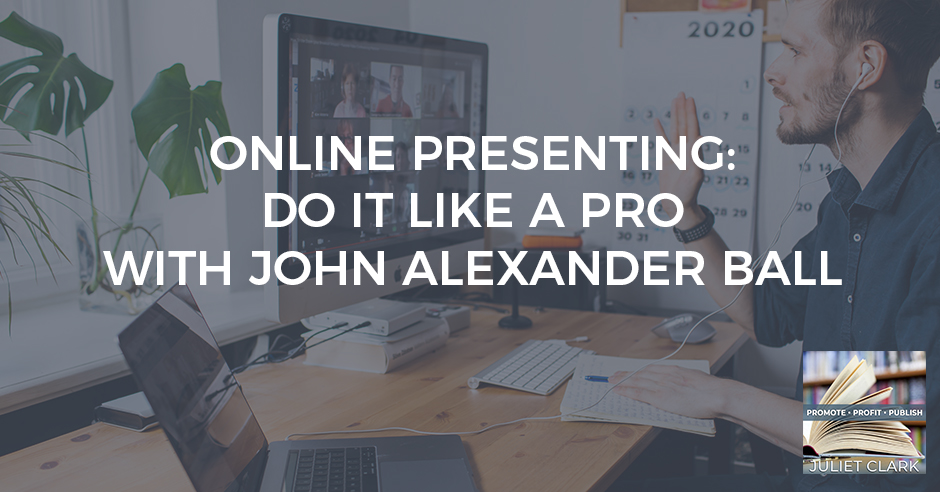
In this day and age, business is all about presenting, and we are pretty much forced to do most of it online. Are you one of those people who never thought they had to do it but are now confronted with the specter of having to face a camera and have their faces on screen for everyone to see? I turns out that you’re not alone, because even some of the most experienced presenters around have had to struggle adapting to this new normal of presenting too! Juliet Clark talks about this in this episode with John Alexander Ball, a coach, trainer, public speaker and presentation skills specialist based in the City of Valencia, Spain. Having done online presenting years before COVID-19 dramatically increased the need for and use of remote work systems, John knows the how overwhelming it can be if you’re just starting to learn how to present online. Join in as he gives us some practical tips on how you can overcome your fears and doubts and start presenting online like a pro.
—
Watch the episode here
Listen to the podcast here
Online Presenting: Do It Like A Pro With John Alexander Ball
I’m glad to have you. Before we get started with our guest, I want to remind you to go over to YouTube and follow us over at Super Brand Publishing, and please subscribe. If you go over there, you can see that these are real people. I’m not sitting here doing cartoon voices and making this all up. You can go over and see what these people look like and you’ll probably recognize a lot of them as they’re talking. Also, don’t forget to go take our Promote, Profit, Publish Quiz and find out, do you have all the pieces in place to be able to launch a book, program, or service in a meaningful way and bring clients in?
Our guest is relevant in these times with COVID. He’s a public speaker. He helps with presentation skills and tools of influence. He’s a coach, trainer, and speaker and he’s based in the City of Valencia. Not Valencia, California. Not Valencia, Florida. Is there a Valencia Florida? It’s in Valencia, Spain. He’s over in Europe. I’m glad to have him on because it’s probably late in the day there. He’s worked with clients worldwide. He’s a former flight attendant, a life business and financial freedom coach with T. Harv Eker for the last couple of years and he’s a passionate Toastmaster and entertaining guest speaker. He is entertaining. I thoroughly enjoyed being on his podcast. This is John Alexander Ball.
Juliet, thanks for having me on the show. I hope you can understand my Spanish accent well enough.
I don’t even hear a Spanish accent. It sounds more British.
I’m English.
I was like, “What? Did I miss that?”
I live in Spain but I’m a Brit through and through.
Do they speak English in Spain where you’re at or do you speak Spanish?
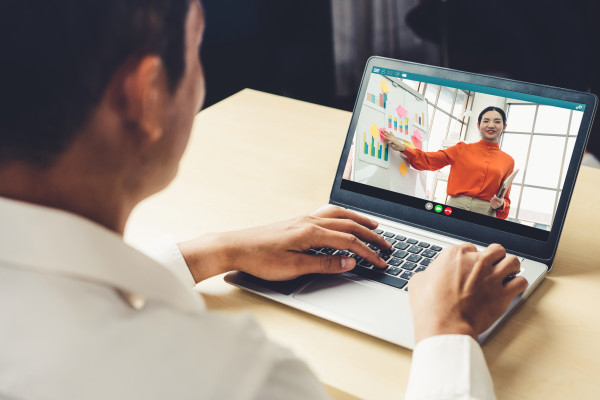
Online Presentation: Everyone has to do some presenting in one way or another. It’s better to do it with a level of understanding rather than wing it and hope for the best.
It depends on where you are in Spain. The British have invaded a lot of parts of Spain. Where I lived when I first came here, there were a lot of English people and now I live in Valencia. There are people who speak English but most people don’t so I do have to speak Spanish and I speak Spanish with a strong English accent.
I never even thought about that. I bet that’s hilarious. When I was growing up, my best friend had spent time in Germany. She was an Army brat and her mother was from Australia and her father was from Kentucky. Sometimes when she would speak, we’d be looking at her like, “What did she say? Was that English?” There’s so much accent mixing.
It forced me to work on the clarity of being understood. As a speaker, I have multilingual audiences so I have to slow myself down. Otherwise, I don’t know if you speak any other languages, but if you’ve ever tried to watch or listen to a presentation in another language if they speak too fast, it’s going to be hard unless you’re fluent. Forcing to slow down to the speaker is a good thing.
I never thought about that and I had an extensive high school Spanish, but now it’s morphed into Spanglish. I know enough to get tequila, a bathroom, and a bed. That’s all I need when I’m in Mexico. I even said I was going to be disciplined about this interview. You teach people presentation skills and with COVID setting in and many people having to go online, this has become a big deal because people don’t understand how to do this online. Can you talk a little bit about what you see out there and what you’re doing with that?
The reality is that we now have to do some form of presentation. Even if it’s in online meetings with people, people have had to move into the online realm. It’s a good thing but like any period of adaptation, it can be a bit clunky and difficult for people who maybe haven’t got used to it. I’ve been doing online presenting, coaching, and workshops for over a few years. It wasn’t a transition for me to be able to do this. This is how I operate my business anyway. This is what I do. Seeing other people having to do that and especially seeing people who even are good presenters struggling to make the transition to doing online presenting and some of the difficulties with that has been interesting. Also, it helped me to notice that there are areas and ways to help people.
One of the first things I did for my business network and a bit beyond that as well was to set up a presentation or an online webinar talking about presentation skills specifically for online meetings and presentations to appear more influential to look like you know what you’re doing there. Also, to sound like you know what you’re doing and run your presentation in a way that’s going to have clarity. Also, it’s going to get people to at least have you thinking, “They seem like they know what they’re talking about,” which is important.
The reality when it comes to presentation skills is that it has been a critical part of business now for a while. Whilst it has been traditionally labeled as a soft skill, that’s no longer the case. If you ever heard of Carmine Gallo, he talks a lot about that in TED Talks and has some good core books in speaking. Even he says, “This is no longer a soft skill.” Maybe people are saying that it’s more of a meta-skill, where other things flow from that as well. In terms of leadership, it’s absolutely critical and now we’re finding that pretty much everyone is having to do some form of presenting themselves in some way, shape, or form. It’s much better to be doing that with a level of understanding of what you’re doing to be able to look professional whilst you’re doing it than to go and wing it and hope for the best.
For those seasoned presenters, I remember back when I was in advertising, one of the scariest things was I had to give presentations and this was many years ago. At first, I wore readers, like reading glasses because I was scared of the audience. Eventually, I got over that. Do you think that people feel the same way with the camera? They can see themselves on video when they’re presenting.
More so in some cases, because people get much more self-conscious especially when they have the awareness that what they’re saying could be being recorded or that they can’t also see responsiveness from the audience. You have no idea what reaction you’re getting from your audience other than if you have a chatbox running or if you can see some of the faces. If you’re giving a presentation, you can’t pay too much attention to your screen anyway. You need to deliver your presentation.
That is true and when you’re talking about those little boxes that run across the top, it’s important. If you’re sitting in a conference room giving a presentation, you’ve got a captive audience. With us at home now, the other people who are reading have to be careful that you don’t have kids, dogs, cats and all that running in because as a presenter, you look at that and it’s like, “Nobody’s paying attention,” which can be daunting.
One of the best things that Zoom and maybe some other platforms have done this as well is bringing in things like being able to give a thumbs-up, a high five or bring some emojis in so you don’t have to follow a chat box. You can say, “Give me a thumbs up.” People can give a clap, happy face, sad face, or whatever it is that you can get some sense of your audience’s responses. You have to elicit that generally. Some people are more than happy to share them and overshare them. It’s less distracting to see those sorts of things appear on your screen than whole sentences or paragraphs that you have to go ahead and try and read.
What about questions? Questions are hard on here too because it’s hard to run a chat and present at the same time.
I say it depends on exactly what you’re doing. For me, I run different kinds of group calls and webinars. Some of the webinars where we may have upwards of 100 people on there and sometimes even close to 200 people at a time, I have to have someone else manage the chat. We use Breakout Room functions as well. Someone else needs to take care of that. If you are a one-person operation, it may be that you need to ask a friend or someone who can come and give up an hour to serve their time to come and moderate your meeting for you. If you’re doing it as more of a common group coaching setting or a smaller group presentation, I don’t think it’s too hard to manage that yourself, as long as you elicit the responses in the chat box when you want them. Also, try and discourage conversations going on in the chat when you’re presenting and talking which is incredibly distracting.
I think about it when you’re on, but I don’t. You’re right, it is distracting because you’re trying to manage your talk. I’m good at going back and forth. I allow people when I present from a stage to ask questions, sometimes if it’s a smaller room. I’m good at going back and forth, but it is because you hit it and you think that they’re asking you a question and they’re talking to each other. You can see it, “This presentation sucks.” You’re like, “Okay.” You didn’t know that was public.
When I first started doing webinars and group coaching sessions, I was using GoToWebinar and I don’t know how much has changed. I haven’t been on there for a while, but there was no video so they couldn’t see you. All they can see is your slideshow and whatever you sent out in the chat because they couldn’t see chat from each other as well. I don’t know what updates GoToWebinar has had in the last several years because we’ve shifted everything to Zoom.
That was a big change where especially as we started realizing people wanted to see you and that was an important part of the relationship. Rather than only presenting a slideshow and a voice, people want to put a face to the voice and want to feel the connection. We’ve now gone to a level of allowing it with the Breakout Rooms. It’s allowing members and guests to connect with each other, to share with each other. That has done one major thing of increasing interaction on those calls I’d say at least by 50%, if not more.

Online Presentation: We have to get good at doing online stuff because it’s not going anywhere. It will continue to grow and become more of the way we do business.
I spoke online and we went to a different program. It was incredible. It was a networking room. It’s a little different than a Breakout Room but I could sit at a table and people came in and asked me and had personal interactions with me with their own questions. Also like they were networking, they were sitting around. It was cool. There’s so much technology going on that’s making this better and better all the time. Presentation skills-wise, what are the things that people are bringing to you like the types of problems that they’re having in this new environment?
One of the big ones and we’ve already started to cover is about visibility being seen and being on camera. That’s always been an issue for many people about standing out, putting their head above the parapet so to speak. Especially in countries like the UK, I know it’s a big thing in Australia, they call it tall poppy syndrome there. You stick your head up waiting for it to be locked up and say, “Know your place,” and come back down to where you’re supposed to be. Who are you to be? A lot of people have that expectation.
Some of the rooms I have been working with, who are in male-dominated industries have ever struggled to be heard anyway because they’re in industries that are dominated by old white men who don’t want to listen to you and think that they know best. It’s been interesting to work with a client who I’ve been working within her industry. I was asking her, “Who were the influences or voices that people look to?” She said, “There’s no one.” This is good news because this means you have an open field to be that person if you’re willing to be, if you’re willing to step out. Generally, it means this thing is getting people into understanding that their mission is more important than their fear because the mission needs to be more important if you’re going to overcome that. Otherwise, the fear is going to keep stopping and you’re going to keep finding reasons not to and keep yourself small. It has to be the why that you’re doing this is bigger than your reason not to.
That goes with speaking as well. You’ve got to overcome that fear to get up there and get your message out. What other problems are you seeing? Is the camera a big barrier in all of this?
Not so much when people understand how to work with a camera and how to work better in this online environment. It’s a case of familiarizing and becoming more comfortable with it. I would much rather give a presentation if I’m going to do a speech live standing up on the stage in front of people. That’s not a luxury we have too much at the moment so we make the adaptation and we do the best we can. What’s important to frame this on is this is opportunities as well, because these things are going to stay with us now and we’re going to find ourselves doing more and more of this all the time.
We’re going to experience more growth in remote working and more people are going to be looking to do this presentation work and online speaking rather than having to travel so much. A lot of companies prefer that as well in some way. It is much easier, logistically, to set these sorts of things up, which is going to become desirable in some senses. Unless you see a good reason to have a particular live event or training and there can be good reasons why you would want to do it live. In terms of the online stuff, we have to get good at doing this now because it’s not going anywhere. It’s going to continue to grow and it’s going to continue to be more of the way we do business.
I agree and I’m loving 2020. I’ve taken one business trip in January. That’s it and usually, I’m out 2 or 3 times a month so it is exciting. Here’s one of the things that I hear that I hope you have tips for is when you’re in the room giving a talk, there’s an energy in that room. How do you translate that on video?
It’s never going to be the same. I was interviewing a guest in my show and she was talking as a comedian about reading the energy in a room and how she utilizes that. It’s as true in speaking and everything else, you don’t have that luxury here. You have to assume it and do your best to visualize it and imagine it because this is going to be where it comes from being self-directed where we can’t look for external validation so much on things. It has to come from inside.
We can motivate ourselves in any way we wish to. We can put ourselves in any emotional-energetic state that we wish to by working and focusing on it. In order to get at least as close to that feeling as you can, visualizing it, doing the Amy Cuddy power poses, hands-on-hips, superhero pose kind of thing, and doing that to make yourself feel powerful before you do your presentation. Also, visualizing a rapturous audience in front of you after you finished your show. All those kinds of things can at least put you in that space or mood. Even though it’s a substitute for reality, it’s as close as we can probably manage to get in these environments. Until perhaps we do end up with a future where you’ll have a holographic audience out in front of you, then you’ll be able to have all that shared experience but in a different format. Maybe that is where we’re headed.
I love some of the summits I’ve been on lately because they figure in a little bit of time for back and forth with you and the host and I like that. The one that I did was somebody who set an appointment and hired me and said, “I loved that energy and the back and forth.” Do you think that helps for people to get to see the real you?
I do. Usually, if I do any program in the end, I’ll do a Q&A session and that nearly always is the point where people get to ask me beyond what we’ve talked about, beyond what’s been prepared that they get insights that they weren’t going to get. Other people get that this is a conversation that I get to listen in on that I wasn’t expecting that might give me some clues and insights as well. It’s wonderful and I know the kinds of conversations that are live events unless you do a Q&A session even then. A lot of that can be prepared and planned for. These are more like the backstage conversations that you would otherwise have with people when you’ve done your presentation and you’re off the stage and people are coming and wanting to talk to you and ask you stuff. Getting to listen in on those conversations is a cool thing.
I do too, and I experienced it. A lot of times you can feel when a speaker is not resonating like there’s something out of alignment with them. I was at an event where the speaker walked off the stage with a hot mic and said, “Get these people away from me.” When you have those backstage talks and the warm-up sessions and those conversations, people get to see what those people are all about. It’s important as a presenter to show up and be yourself, instead of a professional clown as well because it builds trust.
It does and this brings me to think about conversations that I’ve had with some content marketers and stuff when you are always about finding your voice and not as a speaker but as a presenter. That’s important as well. All too often with trying to present an image that is who we think we should be, rather than who we are, and it’s not authentic. At some point or other, the cracks are going to show, and probably for most people, that’s when things start to get a bit stressful or a bit complicated. The cracks in that image will show and the real you will start to show through. It’s better to be as authentic to yourself as you can and be the best version of you in those environments rather than trying to live up to some image of what you think you should be like. Everyone is always too worried about what people think of them or about having to fit into a certain stereotype or image in order to be in the role that they’re in.
There was a book back in the ‘80s. It was called What You Think of Me is None of My Business. You need to think like that. Your people will be your people. People get that misalignment. They get that there’s something not quite right. Your message is good, but you don’t fit the message type of thing.
There are a few top-level speakers and presenters who I don’t resonate with because I have that feeling. I could be wrong. I honestly could, because many other people clearly don’t have that feeling about them but I can only go with my intuition on it and thinking, “I don’t find them genuine or authentic. I find them more like a hyped-up personality rather than who I feel I can connect with.” These days I do want to feel that I can connect with people.
Not only that hyped-up version when you feel that. A lot of people when they come into our industry have a few people on pedestals and you always have to remember those people are like you. Don’t put those people on pedestals or you’re going to find out that it’s there yet they get knocked off easily.

Online Presentation: It’s better to be as authentic to yourself as you can and be the best version of yourself rather than try to live up to some image of what you think you should be like.
They will. People have always said, “You should never meet your heroes, you’d always be disappointed.” I’ve met a lot of my heroes especially in my years of flying. Many a few times I’ve been disappointed, but most of the time has been fine. You do have to accept that they are real people and people are flawed. No matter how wonderful or saintly or wherever you think someone is, the reality of the person is going to be different from whatever image you may see portrayed online or on the media.
John, where can we find out more about you? Do we have to go to Spain? We have to go to Spain, don’t we?
Anyone who wants to come to Spain is welcome. If you would ever come to Valencia, I’d be more than happy to show you the sites of the city but you certainly don’t have to come here in order to find out more about me. One of the best places to connect with me is on LinkedIn and I’m active on there. I try to put out regular video content, articles, and other stuff on there as well. I also post my podcast up there. Getting to know more about me and what I do, the podcast is a great way to do that and it’s called Speaking of Influence. I have my own website as well for my business which is about me and my training which is PresentInfluence.com
Thank you for coming on. This was such a relevant piece of information for people out there because I know many are struggling like, “I never thought I’d have to do this.”
It’s been fun. It’s been lovely to speak to you once again and I’m super impressed by how disciplined you’ve been, Juliet.
Thank you. I feel much better. For those of you who don’t know, I’ve had some Facebook Lives that got a little out of hand. I have a great new friend who’s a lot of fun. We could talk all day.
Thank you.
Important Links
- Super Brand Publishing – YouTube
- Promote, Profit, Publish Quiz
- John Alexander Ball
- GoToWebinar
- What You Think of Me is None of My Business
- LinkedIn – John Ball
- Speaking of Influence
About John Ball
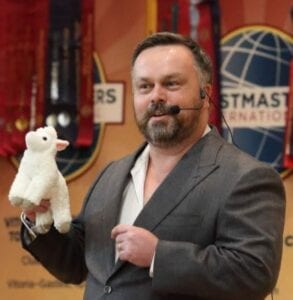 Public speaking, presentation skills and tools of influence coach, trainer and speaker. Based in the city of Valencia with clients worldwide. Former flight attendant. Life, business and financial freedom coach with T.Harv Eker for past 10 years. Passionate toastmaster and entertaining guest speaker.
Public speaking, presentation skills and tools of influence coach, trainer and speaker. Based in the city of Valencia with clients worldwide. Former flight attendant. Life, business and financial freedom coach with T.Harv Eker for past 10 years. Passionate toastmaster and entertaining guest speaker.
Love the show? Subscribe, rate, review, and share!

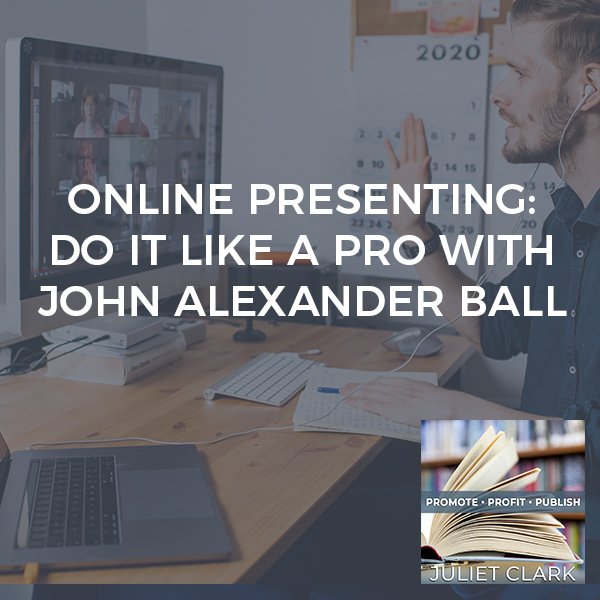


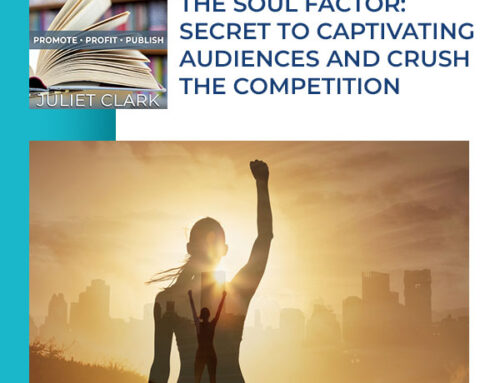
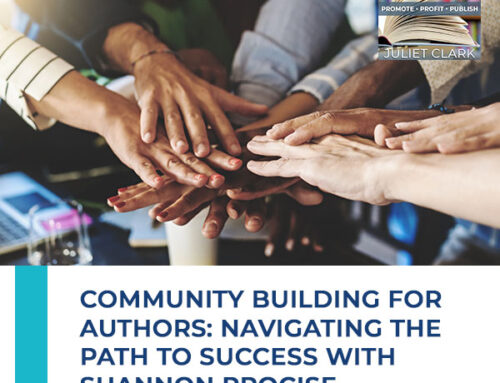
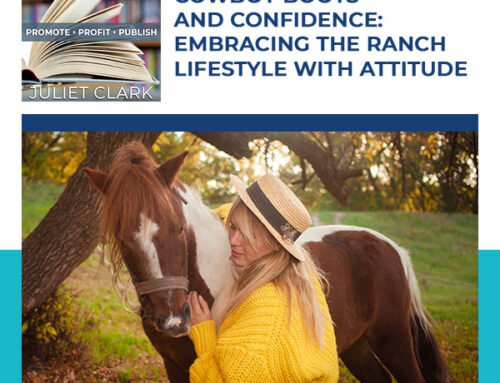


Leave A Comment